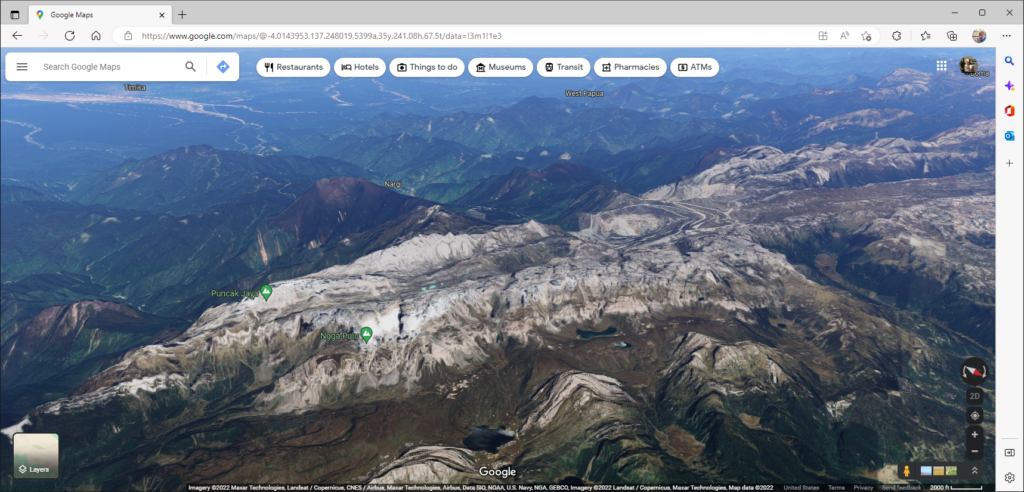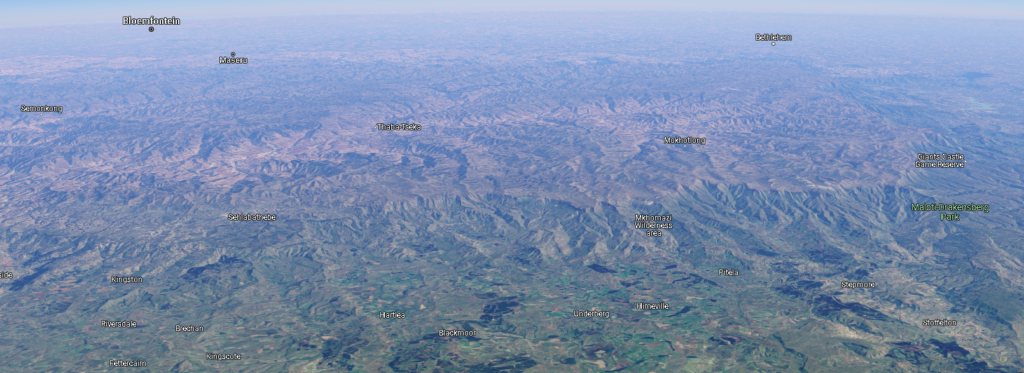
“Niter Ice Cave,” “Last Chance Canal,” and the town of “Grace” are all associated with Gem Valley on the Bear River in southern Idaho. The ice cave formed at the edge of a lava flow (I don’t know how–that’s not important right now,) Last Chance Canal refers to the desperate struggle to irrigate crops in the fertile valley before the land owner’s water rights expired, and “Grace” is the name of the Mormon community that flourished as a result.
In this fantastic image, the Bear River flows into Gem Valley from the top right corner, but instead of filling the valley with wholesome, hydrological goodness, the river appears to have been interrupted by a lava flow that fills the central third of the image. Crops on the left, mountains on the right, and igneous rock down the middle. And so, the water flows between the mountains and lava, doing nobody any good.
However, the height differential creates a unique opportunity for irrigation: if you can dig through old igneous formations carefully, you can irrigate the whole valley. The Last Chance Canal Company accomplished their goal, and added a bit of hydroelectric power into the deal as well. Last Chance Canal Historical Marker (hmdb.org)

